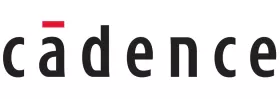Using Voltus IC Power Integrity to Overcome 3D-IC Design Challenges
Power network design and analysis of 3D-ICs is a major challenge due to the complex nature and large size of the power network. In addition, designers must deal with the complexity of routing power through the interposer, multiple dies, through-silicon vias (TSVs), and through-dielectric vias (TDVs).
Cadence’s Integrity 3D-IC Platform and Voltus IC Power Integrity Solution provide a fully integrated solution for early planning and analysis of 3D-IC power networks, 3D-IC chip-centric power integrity signoff, and hierarchical methods that significantly improve capacity and performance of power integrity (PI) signoff while maintaining a very high level of accuracy at signoff. This blog summarizes the typical design challenges faced by today’s 3D-IC designers, as discussed in our recent webinar, “Addressing 3D-IC Power Integrity Design Challenges.” Please click here to view the full webinar.
Major Trends in Advanced Chip Design
From chips to chiplets, stacked die, 3D-ICs, and more, three major trends are impacting advanced semiconductor packaging design. The first is heterogenous integration, which we define as a disaggregated approach to designing systems on chip (SoCs) from multiple chiplets. This approach is similar to system-in-package (SiP) design, except that instead of integrating multiple bare die – including 3D stacking – on a single substrate, multiple IPs are integrated in the form of chiplets on a single substrate.
The second major trend is around new silicon manufacturing techniques that leverage silicon vias (TSVs) and high-density fanout RDL. These advancements mean that silicon is becoming a more attractive material for packaging, especially when high bandwidth and form factor become key attributes in the end design. This brings new design and verification challenges to most packaging engineers who typically work with organic and ceramic substrate materials.
To read the full article, click here
Related Chiplet
- Interconnect Chiplet
- 12nm EURYTION RFK1 - UCIe SP based Ka-Ku Band Chiplet Transceiver
- Bridglets
- Automotive AI Accelerator
- Direct Chiplet Interface
Related Blogs
- Signal integrity and power integrity analysis in 3D IC design
- Cadence 3D-IC Success Stories: Faster Bandwidth, Lower Power, On-Time Tapeouts
- How Cadence Is Expanding Innovation for 3D-IC Design
- Accelerate the Photonic IC Design with Cadence EPDA Environment
Latest Blogs
- 3D-IC Market Outlook: Technology Roadmaps, Readiness, and Design Implications
- Cadence 3D-IC Success Stories: Faster Bandwidth, Lower Power, On-Time Tapeouts
- 3D-IC Test and Reliability: KGD Strategies, Access Architecture, & Failure Mode
- 3D-IC in AI, HPC, and 5G: Bandwidth, Latency, and Energy per Bit Advantages
- Bosch and the chiplet revolution: Enabling software-defined mobility
